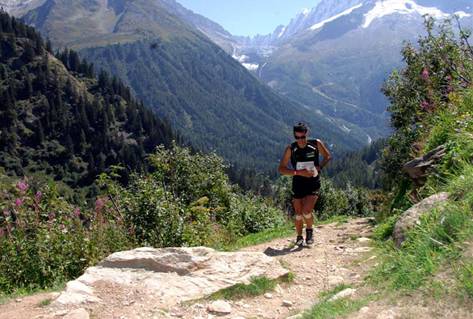
Do you know what you should look for in trail shoes before hitting the path?
If you find yourself running on trails more often than roads and other paved surfaces, it?s time to break in a pair of trail sneakers. These are similar to traditional running sneakers only they?re designed to protect your feet from mud, gravel, rocks and uneven ground. This level of protection is what makes trail shoes different.
Trail running shoes offer a dependable buffer between the feet and the ground. Simply put, trails call for more significant traction or tread on the outsoles, the outer side of the sole. Deeper tread grips gravel, dirt or whatever you?re running on, making slips and rolled ankles less likely.
What you should look for in trail sneakers depends in part on the types of trails you have access to and the sort of distance you do. If you?re a weekend recreational runner who sticks to mostly groomed trails, look for the trail version of your preferred road pair. This way little will change. You?ll have more protection but it?ll feel essentially the same.
~
Finding the trail equivalent of your favorite shoe is simple. Most brands make trail shoes with similar designs to their popular road models. Go to your local running store and ask for assistance, or look on the brand?s website. This is often referred to as a hybrid shoe.
Hybrid pairs are a smart choice for new trail runners because they?re still comfortable for running on a road with. Say you need to first run 2 miles on road or sidewalk to get to the trail, hybrid shoes are probably the style for you.
If you?re training for a marathon or an ultra on trails, or aspiring to build mileage on rugged terrain, you?ll need a serious trail shoe. These are made with a higher level of stability, protection and traction, but aren?t as comfortable on roads and paved surfaces. Ask a professional what should you look for in trail shoes to train on mountains, and they?ll guide you to models with high-performance soles.
Why they’re necessary
Nobody?s going to stop you from veering off your usual road route to see where that dirt path off the side of the road leads. It doesn’t matter what type of shoe is on your feet at first. All it takes is a few strides to see and feel the appeal of trail routes. The scenery is better, you see more nature and wild life and fresh air beats inhaling car exhaust every time.
While the ground has its challenges ? sharp rocks, slippery leaves, hidden sticks ? it’s also softer and therefore causes less injury. Uneven ground builds more strength in your legs so you quickly learn to stabilize and those muscles absorb impact better. A few times out is all it takes to convert many to trail runners.
Road shoes may suffice short term, but once you?re hooked on trails, find shoes to complement this preference. In addition to buffering and protecting feet, they?re also comfortable and that?s essential for avoiding injury. Look for models that are waterproof on top to keep your feet comfortable and dry in mud and wet weather.
Let?s review what should you look for in trail shoes:
- Deeper tread on the outsoles.
- Thick buffer soles.
- Waterproof.
If you?re accustomed to road shoes, expect trails to feel stiff and clunky at first. This takes some getting used to, but the extra features are worth it if you love trails.
Remember to choose running shoes for your foot type. This applies whether you?re neutral, supportive or control. If you?re not sure what this means, associates at running stores are happy to analyze your gait and help you find the right pair. Remember that feet swell when running so always buy a half or full size larger than usual.

